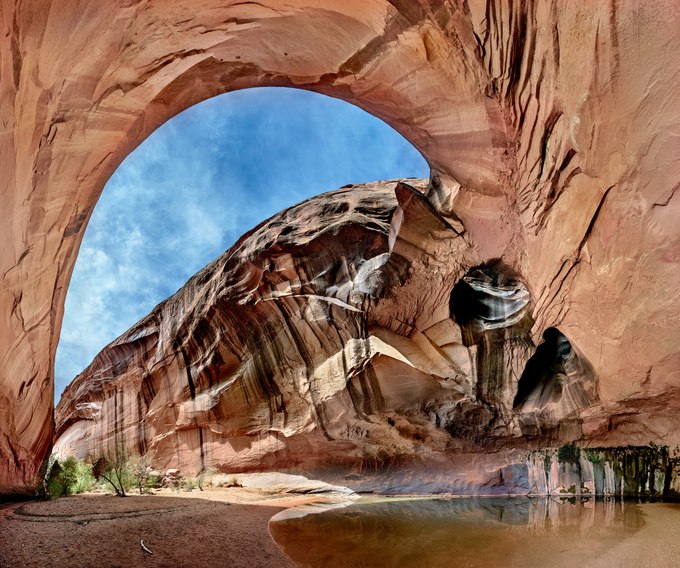Thirty years ago, while trekking south-central Utah's Escalante River, I accidentally discovered the Golden Cathedral. At the time, it was unnamed, but it later became a popular destination. Of equal height, width, and depth—about a hundred feet in each direction—its character transforms throughout the day through subtle shifts in the sunlit reflections off the walls and pond.
Over time, water carved out sedimentary rock to form this peaceful sanctuary, sheltered from the blazing sun and arid red rock country. The sandstone was fractured and sculpted by the alternating freezing and melting of rain and snow that filled the rock's porous crevices. Other similarly eroded features in the surrounding landscape include a unique assemblage of hoodoos, spires, domes, and natural arches and bridges.
On my most recent visit five years ago, where the Escalante River meets its narrow mouth, I entered Neon Canyon. Appropriately named, sunlight reflected off nearby bluffs in the early morning, brightening the shadowed walls and creating a phosphorescent glow. Hiking a mile up-canyon, I photographed the enormous cave, hoping to convey a sense of its scale and shape. The sky appeared flat, as though painted on canvas, its color enhanced by the red sandstone cliffs that encircled it. Its appearance reminded me of artist James Turrell's "Skyspace" ceiling portals that perceptually compress the dimensions of a vaulted sky, bringing it down to the ceiling's plane, which lent the firmament a sense of immediacy and presence.
Location research and commentary by James Baker.

